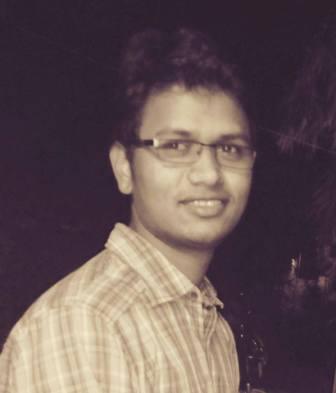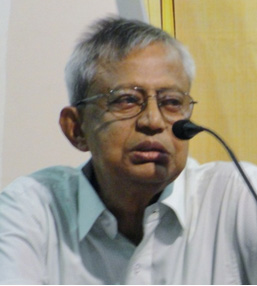Vinod Kumar
 Of late, uniting Ambedkarism and communism has become a matter of discussion among intellectuals and students across India. As far as the emergence of this discourse is concerned, it is because of the increasing assertion of the Ambedkarite forces to alter the politics of the most prominent institutions, in particular HCU, JNU, IIT Madras, and TISS. Caste as the main problem and its annihilation has been the main objective of Ambedkarite politics, right from the beginning. But it was the communists who have so far neglected these primary issues. It is surprising how the forces that always demeaned the politics of caste annihilation and social justice have suddenly realized caste to be a serious problem.
Of late, uniting Ambedkarism and communism has become a matter of discussion among intellectuals and students across India. As far as the emergence of this discourse is concerned, it is because of the increasing assertion of the Ambedkarite forces to alter the politics of the most prominent institutions, in particular HCU, JNU, IIT Madras, and TISS. Caste as the main problem and its annihilation has been the main objective of Ambedkarite politics, right from the beginning. But it was the communists who have so far neglected these primary issues. It is surprising how the forces that always demeaned the politics of caste annihilation and social justice have suddenly realized caste to be a serious problem.
One needs to understand why these forces want to unite with Ambedkarite forces. What are the factors which compelled them to take the support of Ambedkarite forces? Is there any possibility to unite? What are the principles that can be the foundation for this unity? What is the theoretical development that can justify the unity of ‘Jai Bhim and Lal Salam’?
Let us begin with the historical journey of these two movements. No doubt after the emergence of Marxist ideas in the world, all the countries, more or less, were influenced by this ideology, in some form or the other. The October Revolution in Russia gave a practical shape to Marxism with Lenin’s idea of professional revolutionaries. In India, the Communist party was formed in 1925 at a time when Ambedkar was emerging as a strong voice in Indian politics, raising serious concerns pertaining to the Dalit-Bahujan situation in India and their future.
If we look at the history of the first five decades of the twentieth century, it can be marked as the era of emergence of different ideologies in Indian politics. Caste as class has been ignored by the Indian Marxists and hence they could not tackle the most serious problems of the society. Interestingly, the Communist movement is basically led by the upper castes, particularly the Brahmins, and the lower classes (marginalized communities) have been marginalized even within party structures of the communist parties, a trend that continues till date.
However, Ambedkar’s movement grew independently. Ambedkar was the only person who challenged the Brahmanical nature of the society and put forth the social reality in front of the leading forces of the freedom struggle. However, Congress dealt with this question very tactically, but the communist forces did not even try to recognize Ambedkar’s movement and often indulged in delegitimizing his struggle for social justice. Ambedkar’s movement has been perceived as a threat to class politics. He was even blamed to be divisive, from a class perspective. Furthermore, during the framing of the constitution and the first general election, Ambedkar did not get any kind of support from communists. Even in the first general elections, when Ambedkar contested, the communist leader Dange led a campaign against him and asked the voters not to vote for Ambedkar. However, due to Ambedkar’s struggle, Dalit Bahujans of the country were awarded safeguards in the constitution in the form of reservations, elimination of untouchability (at least constitutionally, as a form if not in substance) and some other special provisions. These achievements of Babasaheb have never been recognized; instead the communist leaders have often adversely criticized them.
Communists have presumed the caste problem is a superstructural problem and labor has been seen as a homogenous category. The hierarchal structure of the society doesn’t allow the political unity of different castes even though they belong to the same economic class. Ambedkar has clearly mentioned in his outstanding work “Annihilation of Caste” that the socialists did not care about the caste problem. In a caste society, there isn’t just a division of labor, on the basis of which one can categorize our society into the two binaries of ‘haves and haves not’, something that Marxists typically do. Instead, there is division of laborers, which means labor itself is divided among different caste identities. Workers/laborers will face this problem till caste lasts in the society.
The problem of caste is inherent in the social and religious structure of the society, and the social institutions that reproduce caste should be eliminated from society. The so-called progressive forces have always neglected the serious problems emerging as a result of caste. Their negligence of caste shows their (communists’) Brahmanical character. The left has never questioned social and cultural practices that produce social evils like untouchability, and social discrimination. What does this mean? It is a fact that the communist movement in general and communist parties in particular have been dominated by the upper castes, particularly Brahmans. It means they want to maintain social hierarchy and enjoy the social capital that they got through birth, but at the same time they claim themselves to be real progressive forces. If people from lower castes come and fight for their emancipation they are labeled as casteist and divisive forces. So, in this political and social environment being an upper caste has more advantage to be progressive. If a Brahman is fighting for Dalit Bahujan’s and Muslims’cause, it means his movement will get unquestionable legitimacy because being a Brahman he is talking about the oppression, suppression and rights of marginalized communities as it happened in the case of Kanhaiya Kumar.
Following the 1980s, when regional parties emerged in the Indian political scene, caste became a major issue for mobilization. Parties like BSP in Uttar Pradesh, RJD and JDU in Bihar emerged on the basis of caste based mobilization with a vision for social justice. Kanshi Ram was the founder of BAMCEF, DS4 as social and cultural organizations and BSP as a political organization inspired by Ambedkar’s ideas. The Bahujan icons like Periyar, Phule, Ravidas, Narayan Guru, ShahuJi, Bijali Pasi, and others were brought into public domain for the first time in independent India. The growing power of this movement came as a threat to the Communist movement, and again Dalit-Bahujan movement was called as casteist politics and blamed to divide workers’ unity.
It is a fact that wherever the politics of social justice emerged, the communist politics lost its ground, like in UP and Bihar. However two states have been the centre of communist politics, one is Kerala and the other is West Bengal. Although in Kerala, there is still a support base of CPIM, but in West Bengal they are fighting for their survival. After 1991 the communist movement has been declining and the Bahujan movement is expanding. The idea of social justice is capturing the larger political space and imagination.
‘Jai Bhim, Lal Salam’: a mere spectacle

‘The politics of Lal ‘Katori”; illustration by Nidhin Shobhana
A new political ideology that has been developed by the left forces, the most inimical and the most artificial bondage, which has no other lager emancipatory project but the project of a mere spectacle, a spectacle that is presented through rhetoric, is the rather fascinating empty rhetoric of ‘Jai Bhim, Lal Salam’. In fact, left parties are losing ground in politics across the country, their old method of political mobilization has failed to attract the larger public, therefore they are trying hard to revive themselves. With the help of Ambedkar they want to get legitimacy among the Dalit-Bahujan masses. Moreover, the changing social demography of the campuses is challenging the traditional politics there.
However, one can still see their, i.e., the Communists strong presence in academic institutions. The politics of those institutions is also changing with the voices of social justice, with slogans of ‘Jai Phule, Jai Bhim’, ‘Nahi Rahenge ab Dabkar Birsa Phule Ambedkar’, getting louder. The sound of Jai Bhim and Lal Salam became more visible with Rohith Vemula’s and Kanhaiya Kumar’s issues in HCU and JNU respectively. Left organizations are asserting themselves with the help of Rohith’s Dalit identity.
In fact, the discourse of unity started with student politics and got the attention of academic intellectuals within the university premises. In the case of JNU, till three years ago there was only one Dalit Organization (socio-cultural) named UDSF that carried the legacy of Jai Bhim in the campus. Before 2014, I never heard Jai Bhim from anybody belonging to left organizations. Some Dalit-Bahujan students formed BAPSA (Birsa Ambedkar Phule Students’ Association) on 15 October 2014, drawing inspiration from Phule, Ambedkar and Birsa Munda’s ideas and struggles, with the objectives of fighting for social justice, both inside and outside the campus.
From there the pattern of sloganeering began to change, alongside slogans like ‘Marx, Lenin, Bhagat Singh, We shall fight we shall win’ they started to say ‘Phule, Ambedkar, Bhagat Singh, we shall fight we shall win’. However, their love for Ambedkar is nothing but an act of appropriation and the compulsion to attract Dalit-bahujan students in the campuses in particular, and Dalit-Bahujan masses in general. Due to the common enemy that exists across the country – in the campuses in the form of ABVP; in larger society, in the form of RSS, and in the parliament, in the form of BJP – Dalit-Bahujan forces have been seen at the same platform, for example in the case of Rohith Vemula’s institutional murder in HCU, and in the save JNU movement.
However, if we see the history of the communist movement, it is dominated by upper caste leadership; Dalit-bahujan and Adivasis have been used as foot soldiers, but neglected from the mainstream leadership. The states which have been ruled by the communist parties such as Kerala and West Bengal have failed to address the caste question. In the lives of Dalits and Adivasis, there have not been any positive changes. At the social level, untouchability still exists as it does in the other states of India; caste atrocities are rampant; their (Dalit-Bahujan) representation in the political institutions and in jobs is marginalized. So despite having so-called communist regimes, the marginalized communities’ position remains unchanged. Moreover, the communist cadres have not disassociated themselves from Brahmanical social and cultural practices.
Politically they claim to be communists, but culturally they are following all the Brahmanical rituals and practices. But for Dalit-Bahujans, the Hindu religion and culture is the major cause for their suppression and vulnerable situation in society. Chitralekha, a Dalit woman in Kerala, decided to become an auto driver for the survival of her family. And the so-called progressive forces showed their true colors and barred her from driving. She was threatened, harassed, tortured, and even her mother was beaten up. Why? Because she is a woman and Dalit. She is breaking the Brahmanical patriarchal custom of this casteist society. She is still fighting for justice in the land of communists. This incident shows the Brahmanical character of the so-called progressive forces.
Finally, it can be argued that for the Dalit-Bahujan movement, social and cultural issues are primary and economic issues are inherent within these. However, communist leaders and intellectuals are to some extent admitting that they have done mistakes in the past, and there is a need to address the caste issue with serious consideration. Without annihilation of caste, the class problem can’t be solved.
I would like to end here with some important questions: will the communist movement sustain itself for a long time now that it is already in crisis, not only in India but in the world? Does the Ambedkarite movement have any need of these left forces? Are the left forces taking the support of the Dalit-bahujan only for their survival? Will the upper caste communists really stand against the cultural, social and religious institutions which are responsible for Dalit-Bahujan’s terrible condition in society? Would this be a real unity or just opportunism?
~~~
Vinod Kumar is a PhD candidate in Centre for West Asian Studies, School of International Studies, Jawaharlal Nehru Unversity.










